I’m making another book list again! I’d like to know what books you think are the most important (and give me a good reason) middle grade and YA fantasy books of all time/their time. What changed things? Which were important signifiers of culture at that time? Which were the most important in literary merit? What books had little literary merit—according to some—but changed the way things were done in that genre, or started a huge trend?
I’ll break it down for you and start off with a few obvious ones. What I’d like to know is who you feel fits some of the later categories. I have my own list of titles/authors, but I’m wondering who you’d pick.
Victorian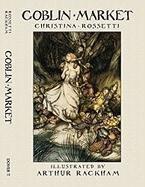
Christina Rosetti
George MacDonald
Water Babies
Edwardian/American of the same era
A.A. Milne
L. Frank Baum
E. Nesbit
Early fantasists
C.S. Lewis
J.R.R. Tolkien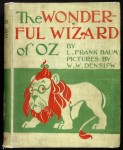
Following in their footsteps (60s-80s?)–these categories are nebulous because these authors’ works span decades; I’ll narrow it down later, as this is just a starting point.
Ursula K. Le Guin
Susan Cooper
Lloyd Alexander
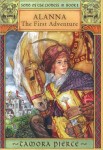 80s-90s fantasy of the 2nd wave feminist variety
80s-90s fantasy of the 2nd wave feminist variety
Tamora Pierce—Alanna especially
Robin McKinley
Donna Jo Napoli
Today’s fantasy
Real world: fantastic elements
Urban fantasy
Holly Black
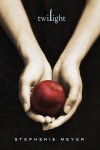 Paranormal (sometimes romance)/Supernatural horror
Paranormal (sometimes romance)/Supernatural horror
Twilight by Stephenie Meyer
Alternate/fantastic world
Epic fantasy/sword and sorcery
Fairy tale retellings/related to fairy tales
Shannon Hale (among others, who overlap with 80s-90s fantasists)
Where the Mountain Meets the Moon by Grace Lin
Real world traveling to alternate fantastic world
Harry Potter by J.K. Rowling
Victorian SF
Jules Verne
Pulp “Golden Age” SF (***NOTE: I’m only looking for stuff published FOR CHILDREN, which might make this category hard to pin down)
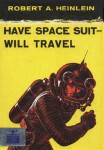 Post-pulp SF
Post-pulp SF
Robert A. Heinlein (actually, though, is Heinlein considered part of the Golden Age?)
Andre Norton
Today’s SF
Dystopia (not always SF)
The Hunger Games by Suzanne Collins
Feed by M.T. Anderson
Uglies by Scott Westerfeld
The Giver by Lois Lowry
The House of the Scorpion by Nancy Farmer
ETA: Postapocalyptic
How could I forget this category? And zombie plagues also fall under this—some books will fall in more than one category. Such as the dystopias—some dystopias are post-apocalyptic, and some post-apocalyptics are dystopian.
Space adventure
I have several titles in mind, but what are the BIG standouts in this genre, gamechangers, for you?
Zombies and other plagues
The Forest of Hands and Teeth by Carrie Ryan
Steampunk
Leviathan by Scott Westerfeld (are there any predecessors I’m forgetting within children’s lit—not adult?)
Futuristic/techy, not fitting in above categories
The Ear, the Eye, and the Arm by Nancy Farmer (or would this be dystopia?)
AGAIN, please note that I am ONLY looking for titles and authors who were published FOR CHILDREN AND YOUNG ADULTS. Please don’t go starting a whole new thread of adult titles that I can’t use in this list. This happens all the time when I’m doing book lists, and when I’m working on it for recommendations to parents or whatever that’s fine, but in this case I’m looking for touchstones that changed the genre and/or have great literary merit.
So, what do you think are the most important, most controversial, most talked-about, most meritorious fantasy and science fiction titles over the years for young people? My categories are vague, and will probably change, but I’m looking at overall eras (and those “eras” I just defined are vague too and will change, but let’s just use them as general outlines that get us from the Victorian era to today).
I’d like, in particular, to know about early women writers we might have previously overlooked, and important multicultural contributions. Surely our list of multicultural fantasy—heavy on the more recent years, and more sparse as we go backward—includes books that should be considered touchstones, such as Wizard of Earthsea, several “juveniles” by Heinlein, The Ear, the Eye, and the Arm and House of the Scorpion.
The Giver would definitely be on my list. I was at reading conference five years ago and one of the presenters said it is the most taught book in all of America. Is it sci-fi? My students always like to debate if its fantasy or sci-fi but which ever way you look at it seems to be the entry point for young readers into dystopian fiction.
Looking forward to see the final list.
Whoops! On my list at home, but I forgot it today. Good one, yes.
Under dystopia, I would include The Giver by Lois Lowry. I’m under the impression (though I could be off) that this is one of the early dystopian novels geared at a MG audience.
Whoops! The Giver is on my list at home, but not here at work. Yes, definitely.
Rudyard Kipling (early 20th century)
Sir Arthur Conan Doyle (The Lost World)
Hi Pat,
Yes, The Jungle Book is both controversial and, as Sarwat Chadda just recently talked about, stars one of the first fantasy heroes of color.
Can you expand on why The Lost World is important? (I haven’t read it, so I’d like to hear a little more about this particular title.)
Perhaps it isn’t, but I tend to think of The Lost World as one of the first to create a science fiction world with dinosaurs and ape-like men. And it was used for decades as the basis of movies and TV shows. I read it a long time ago, but it struck me as being written for teens rather than an adult audience.
I notice The Last Unicorn by Peter Beagle is now thought of a YA. I read it in the early ’70 in grade school, but at the time I thought of it as adult.
Also how about Charles de Lint?
I’m thinking Ender’s Game needs to be on there but it doesn’t exactly scream Space Adventure to me. Not sure where to put it.
Good question, and this is where my categories fall short. They’re by no means final. But a good touchstone!
I failed to mention in my post about Ender’s Game below, that the series hosts a variety of characters of different cultures and races, especially in the parallel Ender’s Shadow books. I may be wrong about this, but I think the SF (space, futuristic societies, etc.) still lean toward adult readers and adult protagonists. Ender’s Game courageously presented a host of child protagonists.
In recent vintage steampunk for children, Westerfeld’s Leviathn series should be paired with the deliciously middle grade, and exceedingly proper Larklight by Philip Reeves (Bloomsbury, 2006). It, along with Starcross and Mothstorm, tell tale of daring do and decorum among the far-flung planets of Her Majesty’s British Solar Empire.
I started Larklight but couldn’t finish it because of utterly bad narration (fake British accent) and haven’t gotten around to reading the print version. It was a good story, just ruined by the narration (which is a danger for audiobooks). I considered it but didn’t put it on the list because I haven’t finished it. Adding it to the must-finish pile.
J. M. Barrie belongs in the Edwardian section for Peter Pan/Peter and Wendy.
Also Kenneth Grahame for The Wind in the Willows, and following him is a line of various talking-animal storytellers: Hugh Lofting, Walter R. Brooks, Richard Adams, etc.
Yes! Thanks—those are all great additions.
I’m surprised that Madeline L’Engle isn’t already on here — her Wrinkle in Time was *vital* for me, and seems like one of those books that crops up as influential in many accounts.
I haven’t read Have Spacesuit, Will Travel by Heinlein, but it goes into your Golden Age pulp SF category — it’s one of the few pulp SF for YA/middle grade that I know of. 🙂
I certainly second the additions of Barrie and Kipling. I suspect Neil Gaiman should be on here somewhere, but I’m not sure where or for what.
In my defense, I wrote this in a hurry and with only half my notes, hoping for exactly these kinds of obvious things that I missed. L’Engle should *definitely* be on the list.
Coraline is the only one of his I’ve read. I should read Graveyard Book, I suppose, but I wasn’t really all that impressed by Coraline, so I’ve just never gotten around to it (and I’m only looking at his children’s/YA titles). Coraline would probably go under paranormal/supernatural.
I guess this ties into what the goal of the list is.I would definitely say that Gaiman’s Sandman was one of the most influential, transformative, and important comic book series of the last 20 years, and have probably had a cross-pollination effect on literature since then. Holly Black’s settings, for example, have a definite “Gaiman-esque” feel to them.
But I don’t know that either Coraline or The Graveyard Book qualify as being “important” books, despite their (and his) popularity. I enjoyed The Graveyard Book, but didn’t feel that it changed anything. It is, by Gaiman’s own description, a re-telling of The Jungle Book, but set in a graveyard.
Right, but again, those were published for adults. Also, note that The Graveyard Book won the Newbery, so it is important at least for that.
Oh, also possibly Maggie Steifvater’s Linger & sequels alongside Twilight. (I vastly prefer Maggie’s stuff, and it deals with similar themes.)
I shared this on Google Plus, and one of my encircled noted that The Hobbit and Eragon should be included; I agree wholeheartedly on The Hobbit, and while I’m not sure about Eragon, I think it changed the perception of how YA books had to be published, which might be worthwhile.
I have Tolkien on there. I just didn’t put the title specifically.
Ender’s Game by Orson Scott Card, published in 1977 (right around the time of STAR WARS) must be included. Why? Because fantasy for children had already been entrenched for a hundred years, but not Science Fiction. Most of the SF stuff was geared toward adults, with adult protagonists. But Ender’s Game introduced a highly sophisticated SF universe with children as the stars. I’ve read every book in the series and it really deserves a notable position on your list.
As I said to other commenters, yes, Ender’s Game is important. I wouldn’t say it was the first important children’s SF book, though. Heinleins juveniles were published for children at least 20 years before that.
I think you’re safe leaving Heinlein in the post-Golden age, because I think his “juveniles” came after the pulp era was over. I’ve never read them, but do understand that they were quite influential.
Asimov also wrote some young adult SF – the Norby Chronicles and the Lucky Starr adventures spring to mind – but I’m not sure how popular/influential they were in the field, though, so not sure if he deserves a spot in your list.
I think the fact that there’s a 20-year-gap between Heinlein & Ender’s Game helps to indicate how important it was. Also, I believe it was the first YA-aimed novel to win both the Hugo and Nebula, but perhaps there were others, if that helps justify its importance. I think you might be justified in having a YA military SF genre which includes it, although the book (and certainly the Ender’s Shadow books) do go beyond that.
I might get tagged for being non-literary here, but what about the Weiss/Hickman original Dragonlance trilogies: Chronicles & Legends? These novels basically started the genre of media tie-in novels, which is a sizable chunk of YA lit these days.
The original Timothy Zahn Star Wars trilogy is arguably just as influential in this regard.
Also, I’m sure that Jane Yolen should be on that list somewhere.
I agree that Ender’s Game is important enough to the genre to include in the list. I was just saying it wasn’t the first. Don’t have to be first to be important.
DL and SW weren’t published for children or young adults. I don’t care if it’s literary or not, but I do care if it was shelved in the adult section of the library or bookstore. We’re just not covering crossover titles here (books that have significant appeal to teens but weren’t published for them).
And ah! Yes. Devil’s Arithmetic is one I meant to include. Which calls to mind that I don’t have a time travel category here (which can be either fantasy or SF or even both depending on the circumstances that cause the time travel).
Don’t give up on Larklight. I read those books out loud with my kids and we all loved them!
I don’t see Dune mentioned here and though I have never finished it, I know many kids who have found it very influential on their reading.
For time travel I enjoyed L’Engles Swiftly Tilting Planet more than A Wrinkle in Time.
I don’t know how young you are interested in going but there are a ton of easy reader Star Wars books that little boys love! And interestingly those very young SW fans go on to enjoy Eragon and think of it as Star Wars without spaceships.
Dune was not published for children or young adults. Neither were Star Wars books.